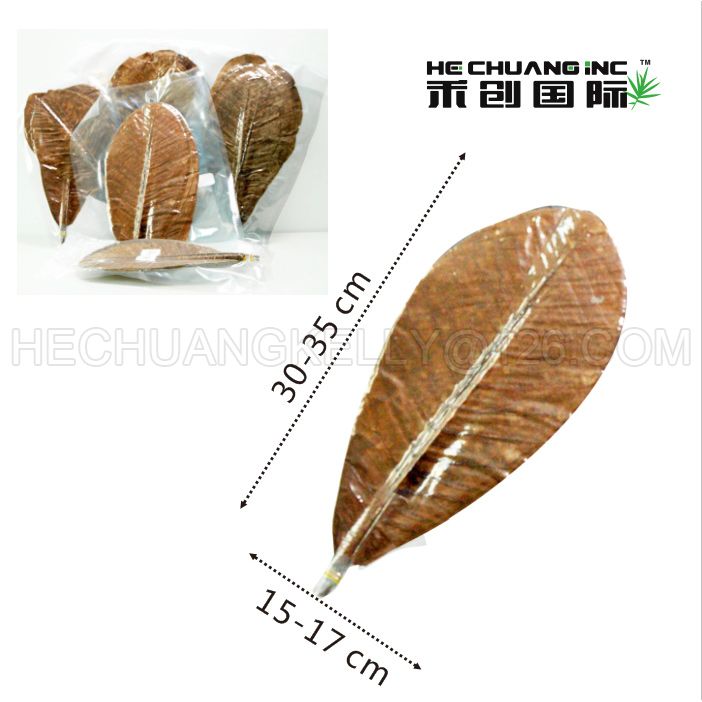Sep. 20, 2023
Home & Garden
Sushi, the iconic Japanese dish known for its artful combination of vinegared rice, fresh seafood, and a variety of accompaniments, has captured the hearts and palates of food enthusiasts worldwide. While many people are familiar with the staples like seaweed nori, pickled ginger (gari), and wasabi, there's a lesser-known but equally intriguing ingredient that adds a unique twist to sushi—Houba leaves.
Introducing Houba Leaves
Houba leaves, also known as magnolia leaves, are a traditional Japanese ingredient that has been gaining popularity for their aromatic, earthy flavor and beautiful presentation in sushi. These leaves come from the Houba tree, scientifically known as Magnolia obovata. The leaves are characterized by their glossy, deep green surface and a slightly fuzzy texture on the underside.
Flavor Profile and Aroma
The distinctive flavor of Houba leaves is what sets them apart in the world of sushi. When used as a wrapper or garnish, they impart a delicate, herbaceous taste with hints of citrus and pine. This flavor profile adds complexity to sushi, complementing the freshness of the fish and the subtle sweetness of the rice. The aroma of Houba leaves is equally captivating, evoking a sense of nature and tranquility.
History and Traditional Use
Houba leaves have a rich history in Japanese cuisine, dating back centuries. They were originally used in traditional Japanese medicine for their therapeutic properties, and over time, they found their way into culinary applications. In sushi, Houba leaves are traditionally used as a wrapper for "Houba sushi," a style of sushi where the leaves envelop the ingredients, providing both flavor and an elegant presentation.

Preparation and Use in Sushi
Preparing Houba leaves for sushi requires a gentle touch to preserve their integrity and flavor. Here's how they are typically used:
Selection: Choose fresh, undamaged Houba leaves. Look for leaves with a vibrant green color and no signs of wilting or discoloration.
Cleaning: Gently clean the leaves with a damp cloth to remove any dirt or impurities. Be careful not to bruise or tear them.
Blanching: To make the leaves pliable and enhance their aroma, blanch them briefly in boiling water for about 20 seconds. Immediately transfer them to cold water to stop the cooking process and retain their vibrant green color.
Draining: After blanching, allow the leaves to drain and air dry. Excess moisture can make them soggy when used in sushi.
Assembly: Place a single Houba leaf on a clean surface, such as a bamboo sushi rolling mat. Add a layer of sushi rice, followed by your choice of fresh seafood, vegetables, or other sushi fillings.
Rolling: Carefully roll the ingredients in the Houba leaf, using the mat to assist in shaping the sushi. Apply gentle pressure to secure the roll.
Slicing: With a sharp knife, slice the roll into bite-sized pieces, revealing the beautiful green Houba leaf wrapper.
Serving: Arrange the sliced sushi pieces on a plate and garnish as desired. Houba sushi is often served with a drizzle of soy sauce or a light dipping sauce to enhance the flavors.
Beyond Sushi: Creative Uses of Houba Leaves
While Houba leaves have found their niche in sushi, their culinary potential extends beyond traditional Japanese cuisine. Here are some creative ways to incorporate them into your culinary repertoire:
Houba Leaf Tempura: Dip Houba leaves in a light tempura batter and deep-fry them until crispy. The result is a delightful appetizer or snack with a crispy texture and a hint of magnolia flavor.
Houba Leaf Wraps: Use Houba leaves as wrappers for other dishes, such as grilled fish, seafood, or rice paper rolls. They infuse a subtle aroma and flavor into the ingredients.
Houba Leaf Infused Oil: Create a fragrant oil by infusing it with Houba leaves. Drizzle this oil over salads, grilled vegetables, or even pasta dishes for an unexpected twist.
Houba Leaf Tea: Dry Houba leaves and use them to make a soothing herbal tea. The tea has a calming effect and a unique earthy flavor.
Houba Leaf Ice Cream: Infuse cream with Houba leaves to create a one-of-a-kind ice cream flavor. The aromatic notes of the leaves pair beautifully with the creaminess of the ice cream.
Conclusion: Elevate Your Sushi Experience with Houba Leaves
Houba leaves may be a lesser-known ingredient in the world of sushi, but their versatility and distinctive flavor make them a treasure waiting to be discovered. Whether used as a wrapper for sushi, infused into oil or tea, or incorporated into other culinary creations, these leaves add a touch of elegance and an unforgettable aroma to your dishes. So, the next time you embark on a sushi-making adventure or seek to elevate your culinary repertoire, consider the enchanting charm of Houba leaves to delight your senses and those of your dining companions.
If you are interested in sending in a Guest Blogger Submission,welcome to write for us!
All Comments ( 0 )